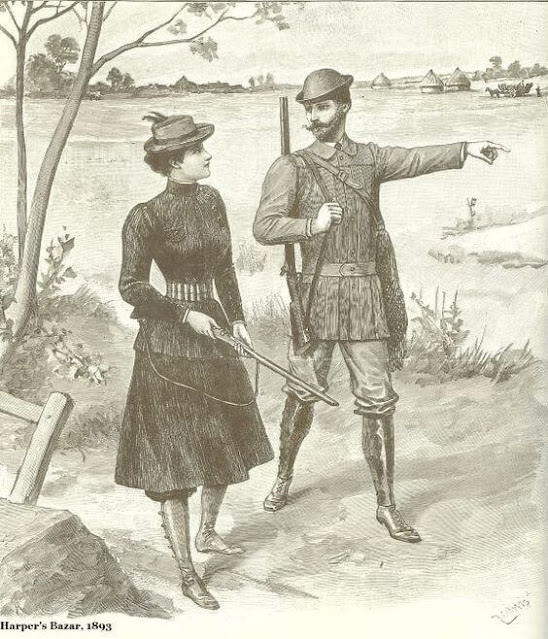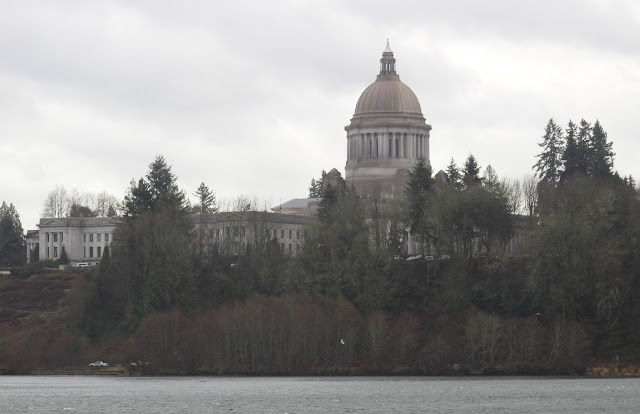Yes, yes . . . I understand that this post is almost two years late. Bear with me, and thanks for following along for this long! Here's wishing you all the best of the Holidays!
Back in the old days, so the story goes, hunters engaged in a holiday tradition known as the Christmas "Side Hunt." They would choose sides and go afield with their guns, and whoever brought in the biggest pile of feathered and furred quarry won.
This, of course, was in the days prior to modern game management.
Wildlife conservation was in its beginning stages in that era, and many observers and scientists were becoming concerned about declining bird populations. Beginning on Christmas Day 1900, ornithologist Frank M. Chapman, an early officer in the newly-formed Audubon Society, proposed a new holiday tradition of a "Christmas Bird Census" that would count birds during the holidays rather than hunt them.
Thanks to that inspiration and the enthusiasm of 27 dedicated birders, 25 Christmas Bird Counts were held that day, in locations from Toronto, Ontario to Pacific Grove, California. Those original 27 Christmas Bird Counters tallied around 90 species on all the counts combined.
This year, nearly 2,500 CBCs were conducted, with nearly 75,000 participants. All Christmas Bird Counts take place between December 14 and January 5 inclusive.
A CBC circle is 15 miles across and the boundaries remain the same year after year. Each circle is divided into sub-areas and teams are sent out to count as many birds as are seen and heard. Teams can cover this area on foot, by car, and even by boat.
This year, Black Hills Audubon once again sponsored a circle in Olympia on the first Sunday of the Count period. I volunteered/was assigned as leader in Area 8, which includes mostly suburbs and rural west Olympia.
There are a few parks and wild areas mixed in with the residential and commercial development. Pretty much, the only big water in ‘my’ section is Percival Cove, which is part of the former Deschutes River estuary that is now impounded as a portion of “Capitol Lake”. But, this is where my group sees most of the water birds seen in our area.
Most participants contact the count coordinator for assignment to one of the teams. Other options include feeder watching or recording birds on one’s own property or neighborhood. The count coordinator arranges for the data to be tallied and submitted.
Bill sent out the following summary of the Count:
The PRELIMINARY TOTAL for the count is 126 species. I have heard back from all the areas, but do not have all of the data sheets returned so that number could change. For some perspective the 10-year and 30-year count averages are 126.5 so we are right about average this year in species, though count parties noted that they felt total numbers were down. Notable misses were Virginia Rail and Cedar Waxwing. Highlights were Red-Shouldered Hawk; Yellow-billed Loon; Eastern Phoebe; Black Phoebe; and Lesser Goldfinch.
My question to you all... Did any of you have Virginia Rail or Cedar
Waxwing on the count and I somehow missed it? We did have a couple of
count week birds as well. They included Northern Shrike and Black-bellied
Plover. Was the Capitol Lake Redhead seen during Count Week? It was
not seen on count day? Please feel free to share this with your teams if
they are not on this mailing list (most participants)
“My” group in Area 8 tallied 54 of the 126 species seen, but only 3-½% of the number of individual birds seen… mainly due to the high numbers of waterfowl and other water birds seen in other sections of the Count.
Our group did find the only California Gull on the Count! An immature bird at Percival Cove. And, we found half of all “Slate-colored” Juncos (well, there were only 2 found) with a Cismontanus bird at my home feeder.
At the "countdown dinner" that evening, I found out that one group of the bird counters
had found a Yellow-billed Loon in Budd Inlet, thanks to Kyle Leader's sharp eyes.
I had not seen this species during my “Peregrination” Year, so made
arrangements to go out in the kayak the next day and search for it with fellow birder John Fleckenstein.
Not having kayaked much this year, I
discovered the next day that I have muscles that I had completely forgotten
about… because today they were all screaming at me!
The next couple of days were spend looking for the Loon from shore, to
no avail. Sigh! You can't see them all.
But, it was worth it. I love participating in the Christmas Bird Counts, which force me to spend the full day in the field, with good friends, looking at birds.





























